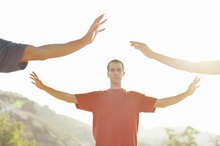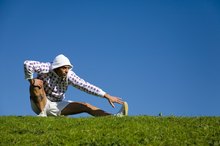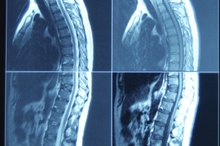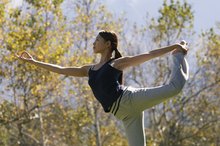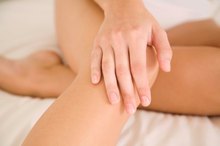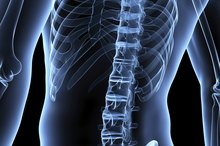What Are the Benefits of Inversion Boots?
Inversion boots, otherwise known as gravity boots, allow for complete, inverted suspension from a stabilized horizontal bar or inversion rack. The boots strap around the ankles and attach to the bar, allowing you to hang safely, upside-down and otherwise unsupported. This type of therapy benefits the body in various ways 2.
If you are experiencing serious medical symptoms, seek emergency treatment immediately.
The Spine
Inversion therapy elongates the spine by allowing the body to hang freely, head first, against the force of gravity 2. This creates natural traction on the spine, using your own body weight. Lengthening the spine relieves pressure and compression around the nerve roots and discs of the spine, and also increases the space around the vertebrae. Less pressure around nerve roots and discs alleviates back pain.
- Inversion therapy elongates the spine by allowing the body to hang freely, head first, against the force of gravity 2.
- This creates natural traction on the spine, using your own body weight.
Vertebral Discs
Alternatives to Inversion Tables
Learn More
The vertebral discs act as shock absorbers between the vertebrae, keeping them separated and the spine flexible. Composed mostly of water at birth, these discs lose moisture over time due to the natural aging process, the stress of gravity and normal daily activity. Nonweight bearing activity, such as inversion, allows the discs time to rehydrate by soaking up essential fluids and nutrients they need to remain plump and supple to maintain their cushioning effect.
Core Training
The core muscles include the muscles of the abdominals, and the middle and lower back. These muscles, essential to functional movement, support the torso and help to maintain good posture, balance and strength. Some exercises, designed to strengthen this area of the body, can cause added pressure and possible injury to the lumbar area of the spine if performed incorrectly. Inversion boots allow you to perform specific core exercises in proper alignment without the risk of injury. Inversion therapy improves posture by realigning the spine to its natural "S" curve.
- The core muscles include the muscles of the abdominals, and the middle and lower back.
- Some exercises, designed to strengthen this area of the body, can cause added pressure and possible injury to the lumbar area of the spine if performed incorrectly.
Warnings
Do Inversion Tables Work for Back Pain?
Learn More
Certain medical conditions, such as high blood pressure or heart disease, or certain eye conditions, such as glaucoma or detached retina, make inversion therapy risky. Please check with your healthcare provider before beginning this or any other new exercise or therapy. Other contraindications for inversion therapy include pregnancy, ventral hernia, hiatal hernia and extreme obesity. Using inversion boots requires a certain amount of physical fitness to clip in and out of them while hanging upside down. When new to this type of therapy, use a trained spotter or partner to ensure safety.
- Certain medical conditions, such as high blood pressure or heart disease, or certain eye conditions, such as glaucoma or detached retina, make inversion therapy risky.
Related Articles
References
- Spine Health: Spinal Discs: Spinal Disc Construction
- Energy Center: Benefits of Inversion Therapy
- Chronic Back Pain. Health Policy Institute. https://hpi.georgetown.edu/backpain/. Published February 13, 2019.
- Wegner I, Widyahening IS, Van tulder MW, et al. Traction for low-back pain with or without sciatica. Cochrane Database Syst Rev. 2013;(8):CD003010. doi:10.1002/14651858.CD003010.pub5
- McMonnies CW. Intraocular pressure and glaucoma: Is physical exercise beneficial or a risk?. J Optom. 2016;9(3):139–147. doi:10.1016/j.optom.2015.12.001
- Chronic Back Pain. Health Policy Institute. Published February 13, 2019.
- Kong L, Tian W, Cao P, Wang H, Zhang B, Shen Y. Predictive factors associated with neck pain in patients with cervical disc degeneration: A cross-sectional study focusing on Modic changes. Medicine (Baltimore). 2017;96(43):e8447. doi:10.1097/MD.0000000000008447
Writer Bio
Sue Doucette started writing in 2004 and was published in “American Fitness" magazine in 2009. She is an A.C.E. certified fitness instructor and Yoga Alliance-registered yoga teacher with more than 17 years of teaching experience. Doucette holds certifications in BodyPump and SilverSneakers and has a Bachelor of Science in fashion merchandising. She graduated from Philadelphia University.
